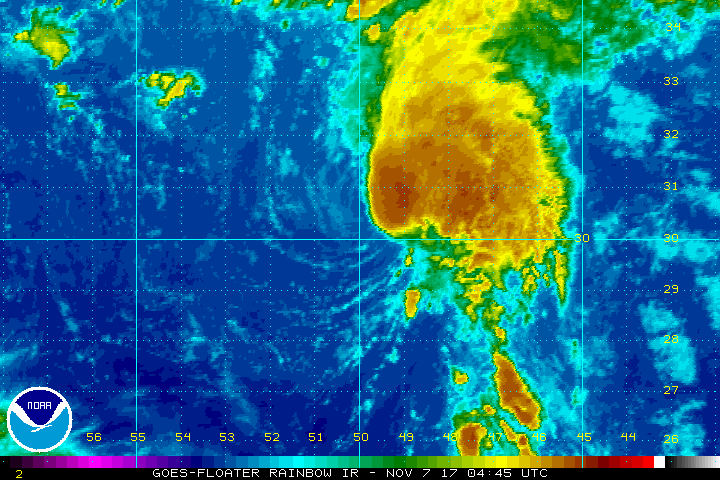
The blue shades represent cold water in the higher latitudes. The red and orange colors represent warmer water, while The Moderate Resolution Imaging Spectroradiometer (MODIS) instrument Represents an eight-day composite from Sept 6 - Sfrom This image of North Atlantic Ocean sea surface temperatures Terra MODIS Sea Surface Temperatures for NorthĪtlantic Ocean.
#ATLANTIC OCEAN RADAR IN MOTION SERIES#
Time series continues with JASON-1 observations. Will reveal how sea surface height is going to evolve as the altimetric The Pathfinder data set also includes the Seasat and Geosatĭata which are referenced to TOPEX/Poseidon data. For this image, the researchers used TOPEX/Poseidonĭata, which has been combined with ERS-1/2 data into the NASA Pathfinderĭata set. The large blue region in the northernĪtlantic represents a slowing of the counter-clockwise, cyclonicallyĬirculating subpolar gyre.

Height is in balance with ocean currents, much in the way weather maps This image shows the dominant pattern of variability NASA, the National Oceanic and AtmosphericĪdministration, and the National Science Foundation funded the study.ĭominant Pattern of Variability of the Sea-surface Improve prediction of climate, weather and natural hazards using the

NASA's Earth Science Enterprise is dedicated to understanding theĮarth as an integrated system and applying Earth System Science to Ocean surfaces, a key measure of ocean circulation and heat storage Satellite provides high-precision data on the height of the world's The joint NASA-CNES (French Space Agency) Topex/Poseidon oceanography Water from warmer southern latitudes, which is part of the driving Using Topex/Poseidon sea-surface heightĭata, the researchers inferred Labrador Sea water in the core of the Have influenced the subpolar gyre's currents, this study found heatĮxchanges from the ocean to the atmosphere may be playing a bigger While previous studies have proposed winds resulting from the NAO Of winter storms and to the buoyant fresh water from glacial meltingĪnd precipitation, all of which are experiencing great change. Winds pick up that lost heat, creating warmer, milder European winters.Īfter frigid Labrador Sea winters, parts of the water mass in the current can become cold and dense enough to sink beneath the surface, and head slowly southward back to the equator. The current loses heat to the atmosphere as it moves north. Ireland, before it turns westward near Iceland and the tip of Greenland. Warm water runs northward through the Gulf Stream, past The subpolar gyre can take 20 years to complete Hakkinen and Rhines were able to reference earlier data to TOPEX/Poseidonĭata, and translate the satellite sea-surface height data to velocities Geosat (1985 to 1988), and the European Space Agency's European Remote Satellite data came from NASA's Seasat (July, August 1978), U.S. Ships and new autonomous "robot" Seagliders, are importantįor validating and extending the satellite data. Measurements from deep in the ocean, using buoys, Satellite data makes it possible to view the gyre over the entire Up of the subpolar gyre can influence the entire ocean circulation Computer models have shown the slowing and speeding Through from the Arctic and from warmer latitudes. It's like GrandĬentral Station there, as many of the major ocean water masses pass Of the Earth is a key site for studying the climate. Like that is happening." Rhines said, "The subpolar zone System, but we need another good five to 10 years to say something Of the ocean climate system, perhaps with changes in the whole climate "If this trend continues, it could indicate reorganization "It is a signal of large climate variability in the high latitudes," Hakkinen Or the result of other factors related to global warming is unknown. Whether the trend is part of a natural cycle Switched phases twice in the 1990s, while the subpolar gyre current System known as the North Atlantic Oscillation (NAO). In connection with certain phases of a large-scale atmospheric pressure The current, known as the sub polar gyre, has weakened in the past In a counterclockwise pattern from Ireland to Labrador were published and can be found on the Science Magazine website. The study's results about the system that moves water

and co-author Peter Rhines, an oceanographerĪt the University of Washington, Seattle, believe slowing of this oceanĬurrent is an indication of dramatic changes in the North Atlantic Sirpa Hakkinen, lead author and researcher at NASA's Goddard Spaceįlight Center, Greenbelt, Md. The late 1990s, compared to the 1970s and 1980s, according to a NASA A North Atlantic Ocean circulation system weakened considerably in


 0 kommentar(er)
0 kommentar(er)
